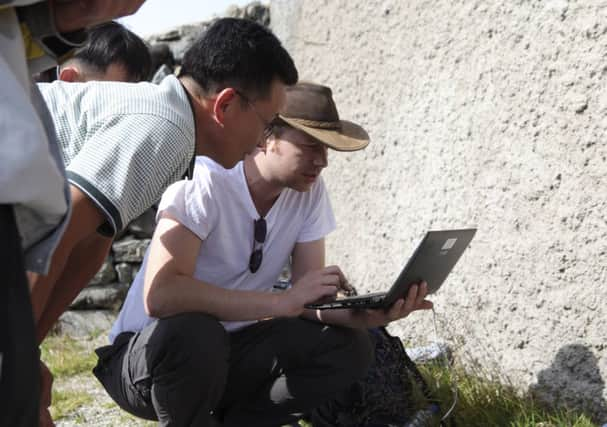UK experts to unveil secrets of Mount Paektu


But unlike other major volcanos, the remote and politically sensitive Mount Paektu remains almost a complete mystery to foreign scientists who have –until recently – been unable to conduct on-site studies.
Now, fresh off their third visit to the volcano, two British scientists studying the mountain in an unprecedented joint project with North Korea say they may soon be able to reveal some secrets of the volcano – including its likelihood of erupting again.
Advertisement
Hide AdAdvertisement
Hide AdThey are collecting seismic data and studying rocks ejected in Paektu’s “millennium eruption” sometime in the tenth century.
“It’s one of the biggest eruptions in the last few thousands of years and we don’t have yet a historical date for it,” said Clive Oppenheimer, professor of volcanology at Cambridge University, after returning to Pyongyang last week from an eight-day trip to the volcano.
“The rocks are a bit like the black box of a flight recording. There’s so much that we can read from the field site itself.”
Prof Oppenheimer said Paektu is not located along any of the tectonic locations that often explain volcanic activity, so why it exists at all is just one question that needs answered.
Little or no historical chronicles of the millennium eruption exist, so scientists are also interested in piecing together what exactly happened and how life returned afterward. Paektu is considered sacred ground in both China and North Korea, where it is seen as a symbol of the ruling Kim family and of the revolution that led to the founding of the country.
Tens of thousands of North Koreans visit the mountain for political indoctrination tours each year. North Korea is also hoping to develop the volcano, which has a crystal blue crater lake, for foreign tourism.
Fears the 2,800-metre-tall volcano might be unstable began to grow in 2002, when increased seismic activity and ground swelling suggested the magma below the volcano was shifting.That activity subsided in 2006.
Though not seen as a serious possibility by most experts, concerns were raised in South Korea and Japan that nuclear tests in the North might trigger an eruption.
Advertisement
Hide AdAdvertisement
Hide AdBut Prof Oppenheimer’s colleague Dr James Hammond, a seismologist at Imperial College in London, said fears of another major eruption soon are probably unfounded. “It’s certainly very tranquil at the moment.”